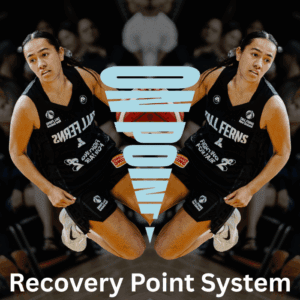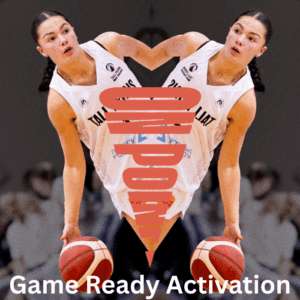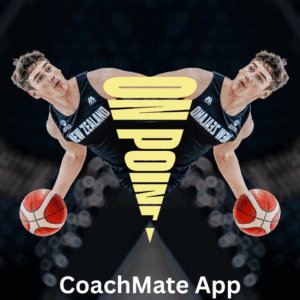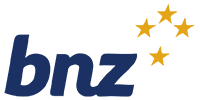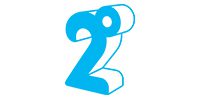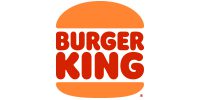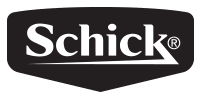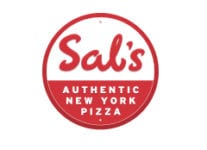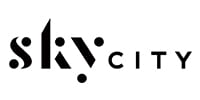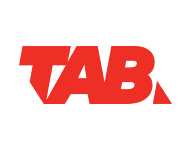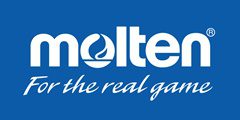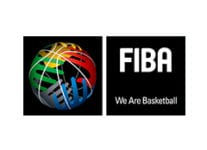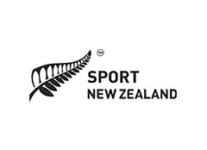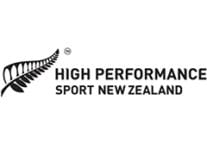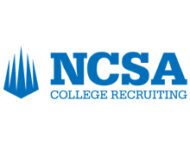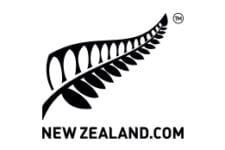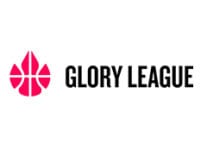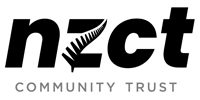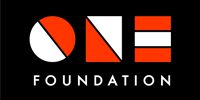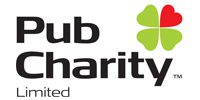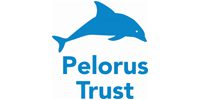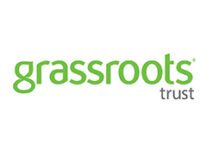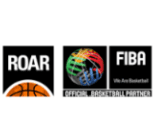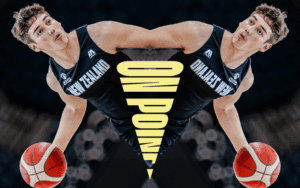
Are you ready for the new era of basketball?
On Point is an evolution of the basketball culture.
On Point is a movement.
It puts preparation, performance, and wellbeing at the heart of how we play.
On Point is for you.
On Point is a basketball way of life.
Hit the Game Ready Activation routine before training and games.
Built from real basketball research to help you move better, jump higher, and stay injury-free.
Read our articles, download the On Point resources and view video examples on the CoachMate app below.
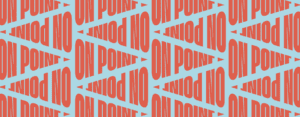
On Point is Basketball NZ’s National Performance and Prevention Programme supported by ACC.
To keep up to date with all things On Point, make sure you’re following Basketball NZ on both Facebook and Instagram.
Articles and Resources
- The Hidden Key to Injury free Hoops
-
>Whether you’re suiting up for game day or hitting the court for an intense training, skipping your warm-up is like playing street ball with rugby players, it’s risky and increases your likelihood of being injured. Research shows that athletes who follow structured neuromuscular activation routines, such as the Basketball New Zealand Game Ready Activation, experience significantly fewer injuries, such as muscle strains and ankle sprains. The best part? It only takes 5-10 minutes to not only reduce your risk of injury but also boost your performance.
Why Activating Matters
Basketball is a fast-paced, high-intensity sport that has very large physical demands. These include rapid changes of pace, abrupt changes of direction (often at speed), and explosive movements, such as max effort jumping. These dynamic actions put immense stress on the muscles, tendons, and joints, particularly the hips, knees, ankles, and hamstrings. Without proper physical preparation, athletes are significantly more vulnerable to strains, sprains, and other preventable injuries.
That’s where the Game Ready Activation comes in, not just as a routine, but as a crucial performance and injury prevention tool.The Science of Activating (Warming Up) for Basketball
Activating/warming up benefits athletes in several ways prior to playing. These benefits include increased blood flow to working muscles, enhanced core body temperature, and an activated neuromuscular system (mind-muscle connection). This physiological shift enhances muscle elasticity and joint range of motion, both essential for powerful and safe movement on the court. It also primes coordination, balance, and proprioception (your body’s awareness of positioning), all of which are critical for reactive sports like basketball.
So, if you are to skip this process, it doesn’t just limit performance; it increases the risk of injury. Research shows that teams and athletes who use structured warm-up programs see a 50-60% reduction in soft tissue injuries (Sople & Wilcox, 2025).What Makes an Effective Warm-Up?
A solid basketball warm-up should include:
- Strength (e.g., planks, squats, lunges, and RDLs)
- This will create a strong mind-muscle connection, leading to enhanced neuromuscular activation
- Movement (e.g., dynamic mobility, jump/land mechanics)
- Movement can be thought of as the middle ground between neuromuscular activation and basketball specific movements
- Basketball Specific (e.g., movements that are directly mirrored in a game)
- This includes defensive slides, rapid changes of direction, and sudden accelerations and decelerations
Keep it simple to begin with. Start slow and build intensity, ensuring we emphasise quality over quantity for each movement. Once we master these movements is when we can challenge ourselves further. How would you progress a squat?
Bottom Line
Warm-ups are more than a just a time filler before games or trainings, they are your injury insurance policy and performance primer. Whether you’re a weekend warrior or elite athlete, integrating a structured activation routine, such as the Game Ready Activation into every session can keep you healthier for longer, helping you play harder now, and stay in the game for many seasons to come. - Strength (e.g., planks, squats, lunges, and RDLs)
- Getting Recovery Right During Tournaments
-
Tournament basketball is intense, with multiple games over several days, it will take a toll on the body and mind. Recovery isn’t just rest; it’s about making smart, proactive choices that help athletes stay fresh, reduce injury risk, and perform at their best.
Basketball New Zealand’s On Point Recovery Points System provides a simple way to guide recovery. Athletes should aim for 8-15 recovery points every 24 hours by using a mix of strategies across six key areas.1. Sleep
Sleep is the foundation of recovery. Neglecting your sleep is like shooting threes with your eyes closed, do you really want to air ball your body?
-
- 8+ hours of sleep is the holy grail. Prioritise this above all else.
- Short naps and sleep aids (like eye masks) can also help
Sleep supports muscle repair, mental focus, and emotional regulation, all of which play prominent roles in sport performance.
2. Hydration
Hydration is the key pillar of recovery. To neglect this is like neglecting wearing sunscreen at the beach during the middle of summer, it won’t end well.
-
- Aim for a daily baseline of at least ~3L of fluids per day (ideally water or sports drinks only)
- During tournaments, this intake may need to be upped dependant on sweat loss. For every 1kg of bodyweight lost, you should be drinking an additional 1.2L-1.5L of fluids to replenish this on top of your baseline needs.
Hydration plays a prominent role in supporting key bodily processes and functions related to both performance and recovery.
3. Nutrition
Food is fuel. You wouldn’t take your car on a roadie with the gas light on, so why play basketball with your internal gas light on?
-
- Goal is to prioritise whole foods within 90 minutes of games. Whole foods are natural, including fruit and vegetables, lean meat, nuts, and whole grains.
- Include protein-rich snacks throughout the day to help support performance and recovery.
Optimal nutrition restores energy and supports muscle recovery, both of which are key during tournaments, influencing performance.
4. Psychological Recovery
Mental recovery is just as important as physical recovery. Think of it like halftime for your brain. Skip it, and you’re heading into the second half with no adjustments, clarity, or chance to reset
-
- Use mental tools like breathwork, imagery, and positive self-talk to help with performance on court, but to also stay calm, focused, and confident off it.
- Heard of the Smiling Mind app? This is an excellent free resource that helps aid an athlete’s recovery, and wellbeing overall.
Psychological recovery during a tournament is imperative, helping maintain performance by helping with focus, managing stress and arousal, and enhancing concentration and confidence.
5. Massage
Massage should be viewed as another important pillar of recovery, helping your body reset and recharge. Skipping it is like trying to fix a flat tire by driving faster, it only makes the damage worse.
-
- Use a foam roller for 10 minutes or a trigger point ball for targeted release.
- Deep tissue massage is one of the most effective recovery techniques, reducing delayed-onset muscle soreness (DOMS) by >30%.
Massage reduces muscle soreness and inflammation, improves blood flow helping deliver nutrients and remove waste, and promotes muscle relaxation and flexibility.
6. Hydrotherapy
Hydrotherapy helps flush fatigue and reset your body. Ignoring it is like skipping the rinse cycle, you’re still carrying yesterday’s load into today’s game.
-
- Try a pool or beach recovery session, which will be especially effective during tournaments.
- Contrast therapy (alternating hot and cold) or cold-water immersion are also great options if the pool or beach is not possible.
Hydrotherapy overall is an effective tool for sports recovery, helping reduce muscle soreness, inflammation, and fatigue, three critical elements you should be aiming to manage during a tournament.
7. Compression
Compression is recovery on autopilot. Not using it is like ignoring a free upgrade — why settle for slow when you can bounce back faster?
-
- Wearing them during sleep or travel earns recovery points, and is a simple, mindless task that requires minimal effort to gain recovery benefits.
Compression garments are an effective recovery tool, as they work without you needing to anything besides put them on. They help with aiding circulation and reduce muscle soreness, two things that are helpful to promote recovery during tournaments.
Final Tip: Mix It Up
Recovery works best when athletes use a variety of strategies. Encourage players to use the Recovery Points System, experimenting with what works best for each individual athlete, tracking their recovery points along the way. Ultimately though, the most important pillars of recovery are sleep, nutrition, and hydration, making up roughly 90% of the equation, so prioritise these areas accordingly.
-
- Breaking Down the Game Ready Activation: Why Strength Comes First
-
Before tip-off, athletes often focus on stretching or getting shots up, but ensuring you get your neuromuscular system is firing is just as important. The strength component of Basketball New Zealand’s Game Ready Activation routine is designed to do exactly that! It fires up the neuromuscular system, the connection between mind and muscle, essential for explosive movement, injury prevention, and peak performance.
Think of Strength as Switching On
Strength in the activation context isn’t about lifting heavy weights; it’s about switching on the muscles that matter most for basketball. Think core, quads, hamstrings, glutes, and hips (abductors/adductors). These are the muscle groups that drive acceleration, jumping, landing, and change of direction. When properly activating these muscle groups, athletes move more efficiently and with greater control.
Strength should be viewed as a key, integral component of any activation routine in basketball. Skipping it is like trying to play with the lights off in a gym with your shoes untied, you will be out of sync, unable to coordinate your movements, increasing the risk of injury whilst hampering performance.
The Mind-Muscle Connection
The firing up of the mind-muscle connection is a crucial benefit of strength activation. It helps athletes consciously engage the right muscles at the right time, improving movement quality, reaction times, and coordination, all of which play key roles in injury prevention. In basketball, where explosive actions and quick decisions are constant, this connection ensures the body responds in an efficient manner. A strong mind-muscle connection also supports injury prevention by reinforcing proper movement patterns and joint stability, helping athletes perform safely on court.
In summary, the mind-muscle connection is a valuable performance enhancing tool that plays a key role in injury prevention. If key stabilising muscles (like hamstrings, glutes, and core) are not appropriately activated, it can lead to compensations and increased injury risk. Therefore, strength must be an integral component of any activation routine, as it helps fires up the mind-muscle connection, leading to enhanced performance and reduced chances of injury.
The Root of Injury Prevention
Many common basketball injuries, like ankle sprains, knee pain, or hamstring strains, are in part directly related to poor muscle activation. In many cases, if a proper warmup/activation routine was followed, that incorporated strength, these common niggles and injuries would happen less. Strength-based activation exercises help achieve full range of motion and stabilise joints, fire up the mind muscle connection, improve jump/landing mechanics, and enhances movement quality overall, all of which help reduce the risk of injury. To conclude, pre-game/training strength can be thought of as a simple, effective strategy to prime and protect the body before the intensity increases.
Not Just for the Weight Room
It is important to note that strength work, although often hand in hand with the gym, isn’t solely limited to the gym. In fact, incorporating bodyweight strength movements into warmups/activations is one of the most effective ways to prepare the body to compete at a high intensity. Exercises like planks, side planks, squats, lunges, and single-leg RDLs can be done without equipment on the courtside in minutes. Coaches, this means it can be done without cutting into court time!
Final Tip: Make It Intentional
Strength activation should be targeted and intentional – following Basketball New Zealand’s Game Ready Activation Routine is the perfect place to start. Remember, a warmup is about preparing the body for the specific demands of basketball, not doing random fad exercises you see online. Coaches and athletes should treat this part of the warm-up as a non-negotiable, just like lacing up your kicks before stepping onto the court.
- Breaking Down the Game Ready Activation: Why Movement Matters
-
Before stepping on the court, athletes need more than stretching, they need to move like they play, after all, basketball is a game of speed, agility, and constant direction change. That’s where movement, the second component of Basketball New Zealand’s Game Ready Activation routine comes in. It prepares the body for the dynamic demands and actions of basketball, resulting in enhanced performance and reduced injury risk.
Movement Means Ready to Perform
Movement activation focuses on dynamic exercises that prepare the body for basketball’s physical demands. These drills prime muscles, joints, and the nervous system for explosive actions like jumping, cutting, and landing. Skipping this step is like trying to play defence blindfolded, you’ll be slow to react and more likely to get injured.
Why Movement Matters
Basketball is unpredictable. Players constantly shift from offense to defence, change speeds, and adjust angles. Movement activation trains the body to handle these transitions smoothly, improving mobility, balance, and coordination while reinforcing proper movement mechanics to prevent injuries.
Impact on Jump and Land Mechanics
Dynamic exercises like countermovement jumps, multi-directional hops, and lateral bounds activate the muscles and joints involved in vertical and horizontal force production. This not only increases jumping ability but also reinforces proper landing mechanics by training athletes to absorb force through the hips, knees, and ankles. Better landing control reduces stress on joints and significantly lowers the risk of injuries such as ACL tears or ankle sprains.
Influence on Agility, Balance, and Coordination
Basketball demands rapid changes of direction, lateral movement, and body control under pressure. The exercises apart of movement, including skaters, hip in/out (open/close the gate), and multi-directional hops enhance agility by improving hip mobility and reactive strength. These exercises also challenge balance and coordination, teaching athletes to stabilise quickly after dynamic movements. The result is smoother transitions between offensive and defensive actions, sharper footwork, and enhanced movement efficiency, all essential for high-level performance.
The GRA Movement Sequence
The routine includes:
- Running Forwards/Backwards – warms up the body and activates key muscle groups.
- Hip In/Out (opening/closing the gate) – improves hip mobility for better overall movement, particularly benefitting change of direction movements.
- Hop Complex – multidirectional double and single-leg hops for reactive strength, priming vertical force production and absorption.
- Countermovement Jump – primes explosive jump/land mechanics, specifically vertical force production and absorption.
- Skaters – Activates the muscles that are essential for lateral stability and directional changes. Also enhances lateral power, control, and agility.
- Hop & Stick (lateral bounds) – trains single leg jump/land mechanics, particularly focusing on single leg landing stability and body control.
Final Tip: Make It Basketball-Specific
The second component of the Game Ready Activation, movement, isn’t a random assortment of exercises, they reflect the physical qualities and demands of basketball. Coaches and athletes should treat this as a non-negotiable, just like lacing up your kicks before stepping onto the court. Through following Basketball New Zealand’s Game Ready Activation routine, you are ensuring every player steps onto the court ready to move, react, and perform. With strength and movement complete, basketball specific is the final component of the Game Ready Activation to complete. It consists of specific, high intensity movements that are directly replicated in the game of basketball.

